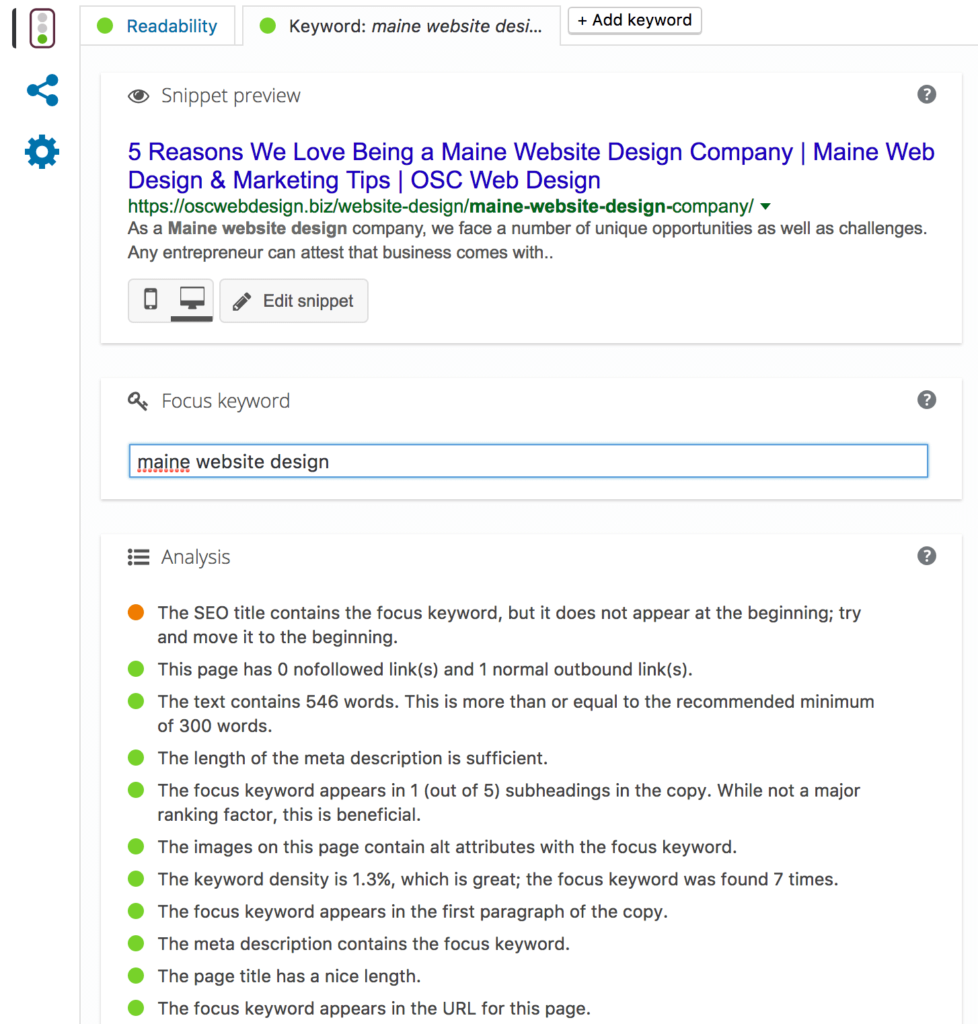Is it really possible to improve your website’s SEO in minutes? While search engine optimization efforts can prove complicated and time consuming, there are plenty of quick – yet effective – fixes you can make right now.
Open up the backend of your website and get started!
Reorganize blog categories and tags.
When naming blog categories keep your keyword list handy to refer to. Whenever possible, include target keywords – but only where they make sense. For example, if we hitched ‘Maine’ onto each of our blog category names, they may be closer to our target keywords but would look repetitive and spammy.
If you’re ever contemplating if you should sacrifice user-experience for SEO – always choose UX. Search engines will continue to move towards favoring websites with superior UX anyway.
Install Yoast SEO.

We couldn’t say enough good things about the Yoast SEO plugin. This is a great tool for beginners and advanced SEOs alike.
With it you can:
- Create XML sitemaps.
- Improve SEO with real-time page analysis (example in image above).
- Control which pages are shown in search results and which are not.
- Integrate social media accounts.
- Adjust page title tags and meta descriptions.
- & more.
..all for free!
Use proper header tags.
In the following video, Matt Cutts (former Google head of webspam) minimizes the importance of header tags. While they are indeed far less important than other SEO aspects, do you really want to disregard them just because there are other websites out there with awful SEO?
It’s our opinion that header tags are still worth caring about, especially with the limited number of SEO factors under our control.
So, how do you properly use headings? Our rule of thumb is to move in order of most important. In the example below, let’s say the larger area is most important.
<h1>Earth</h1>
<h2>North America</h2>
<h3>United States</h3>
<h4>Maine</h4>
<h5>Scarborough</h5>
<h6>Highland Ave</h6>
Whenever possible, try to include keywords in your h1 tags at the least.
Improve your URLs.
It should come as no surprise that yes; search engines pay attention to URLs as well. Remove all unnecessary words from URLs, such as “stop” words like and, if, on, etc. Let the focus be on important keywords that are the main focus of the page.
Rewrite title tags and meta descriptions.
Optimized title tags and meta descriptions are not only huge for SEO, these serve as the preview of pages in search engine results. Stand out from competitors and improve click-through-rate by writing enticing call-to-actions like:
Don’t forget to use keywords!
Go through your image alt tags.
If you’ve been neglecting your image alt tags, these are an easy SEO 5 minute fix. Doing this will make your images accessible for both users with visual impairments as well as search engines. It’s important to remember that search engines can’t read images, so they look to your alt tags to determine what images are about.
Use nofollow tags.
If you use external links to websites you aren’t necessarily “recommending”, it’s smart to make them nofollow links. This tells search engines that you aren’t vouching for the credibility of said links, and hopefully (search engine bots don’t always listen) they will continue crawling your page instead of following the link. Conserve that precious link juice!
There you have it: 5 minute fixes for improving your website’s SEO. Remember, sometimes it’s the little things that can make all the difference. Combine quick fixes with long term solutions for an SEO strategy that will get you ranking above the rest.



